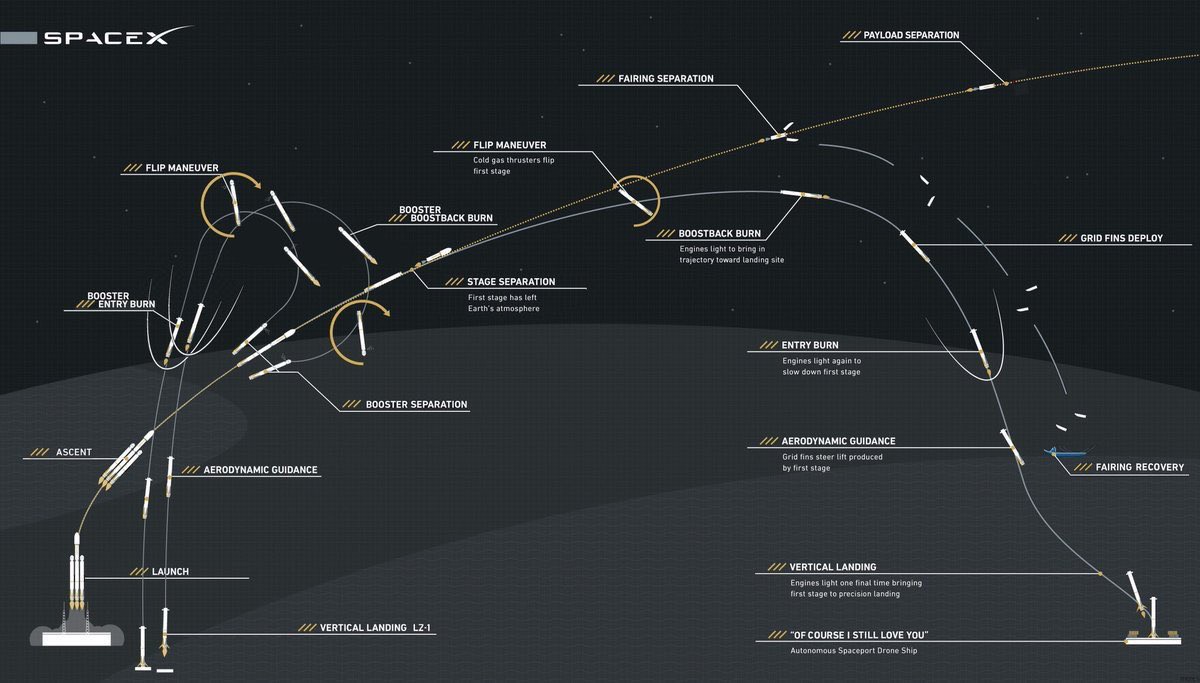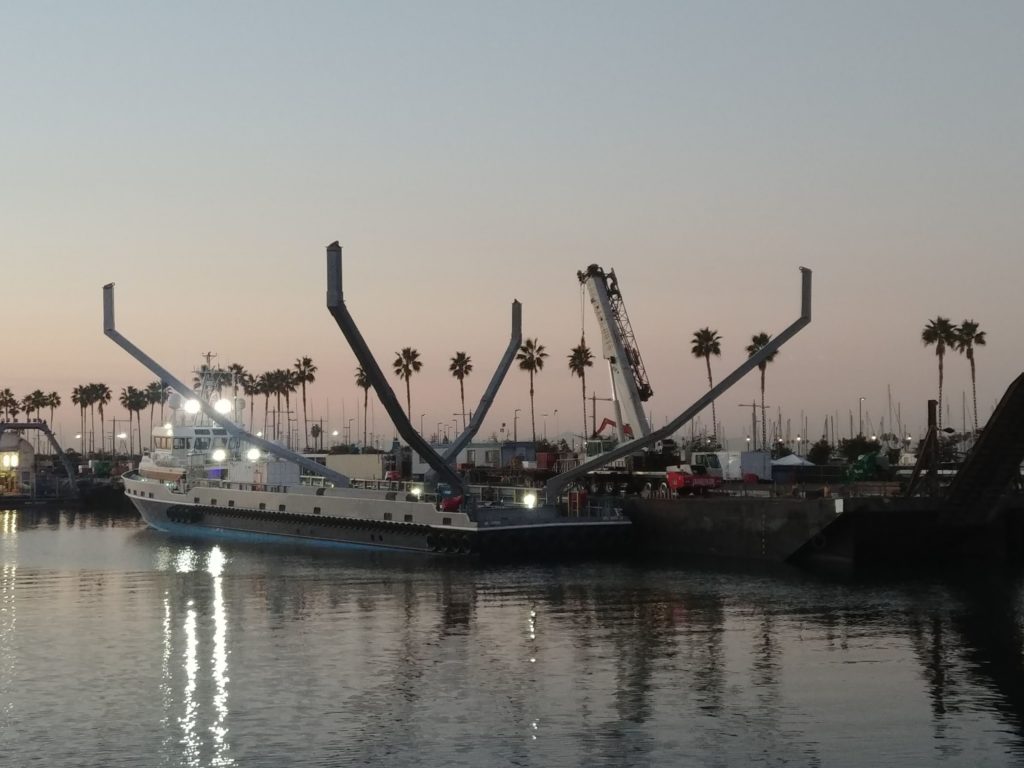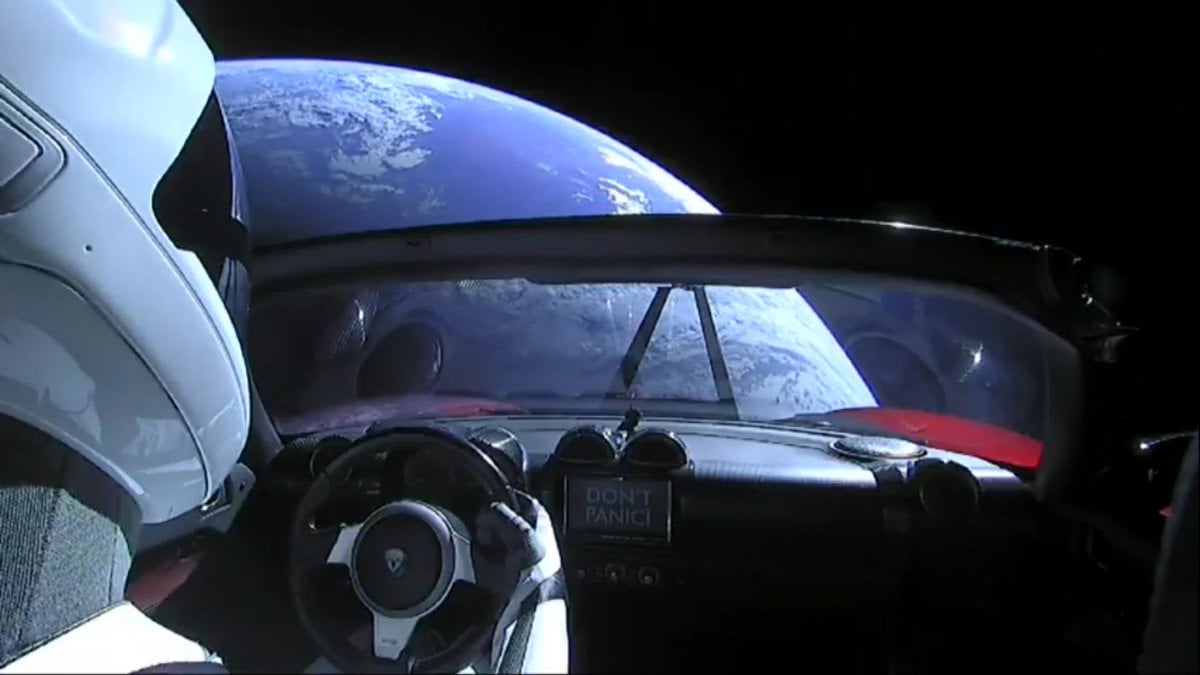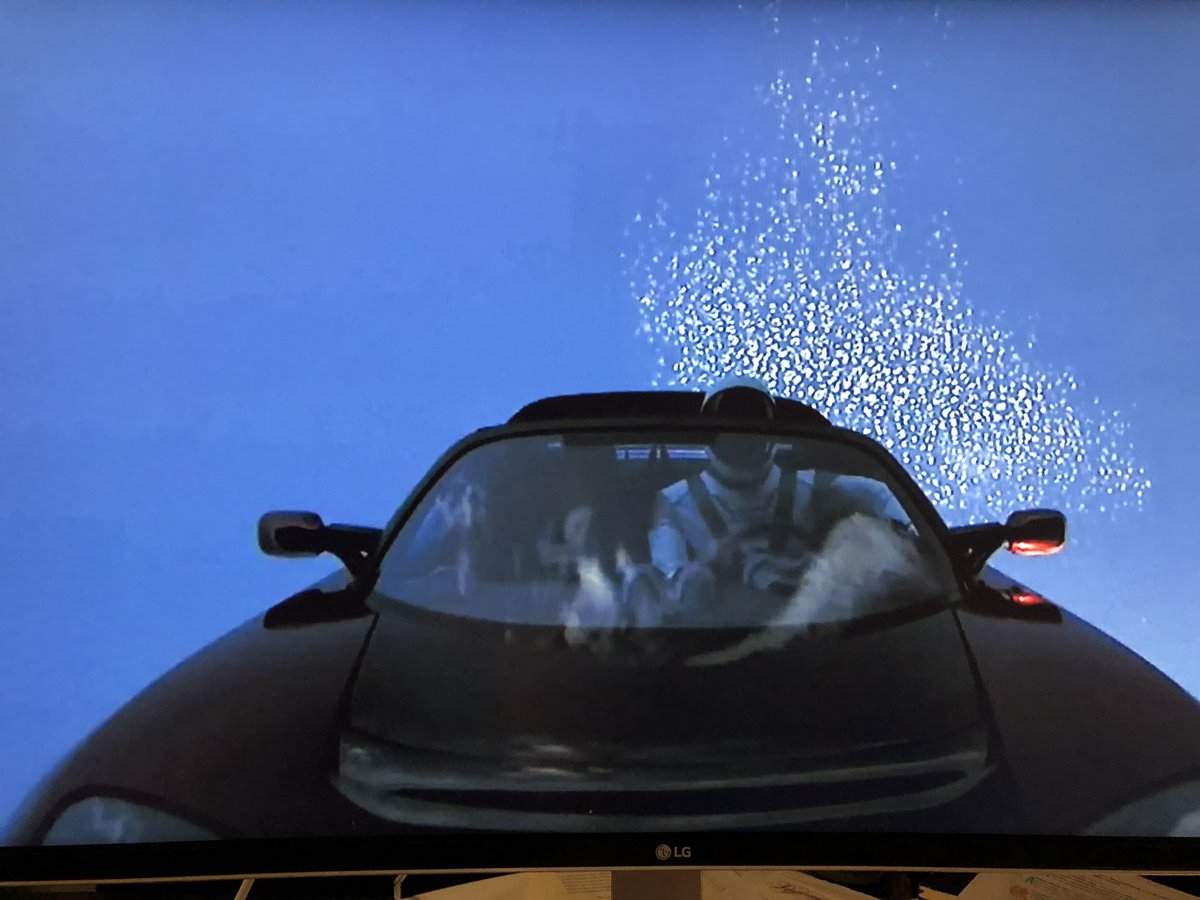SpaceX’s Falcon Heavy Demonstration Mission launched from Launch Complex
39A (LC-39A), Kennedy Space Center, Florida, on 6 February 2018, at 20:45 UTC (15:45
ET).
For its maiden flight, Falcon Heavy’s second stage will attempt to
place the payload, Elon Musk’s Tesla Roadster, into a precessing
Earth-Mars elliptical orbit around the Sun.
For this first flight test,
Falcon Heavy’s two side cores launched the Thaicom 8 satellite (May
2016) and the CRS-9 mission (July 2016).
Following booster separation,
Falcon Heavy’s two side cores landed at SpaceX’s Landing Zones 1 and 2
(LZ-1 and LZ-2) at Cape Canaveral Air Force Station, Florida.
Falcon
Heavy’s center core attempted to land on the “Of Course I Still Love
You” droneship, stationed in the Atlantic Ocean.
From Maritime Executive
On Tuesday, aerospace firm SpaceX conducted the first test of its Falcon Heavy rocket, the heaviest capacity launch vehicle in operation today.
The launch was a success, the rocket's dummy payload is in orbit, and two of three booster sections have returned to Earth for reuse.
Falcon Heavy animation :
When Falcon Heavy lifts off, it will be the most powerful operational rocket in the world by a factor of two. With the ability to lift into orbit nearly 64 metric tons (141,000 lb)---a mass greater than a 737 jetliner loaded with passengers, crew, luggage and fuel--Falcon Heavy can lift more than twice the payload of the next closest operational vehicle, the Delta IV Heavy, at one-third the cost.
Falcon Heavy's first stage is composed of three Falcon 9 nine-engine cores whose 27 Merlin engines together generate more than 5 million pounds of thrust at liftoff, equal to approximately eighteen 747 aircraft.
Following liftoff, the two side boosters separate from the center core and return to landing sites for future reuse.
The center core, traveling further and faster than the side boosters, also returns for reuse, but lands on a drone ship located in the Atlantic Ocean.
At max velocity the Roadster will travel 11 km/s (7mi/s) and travel 400 million km (250 million mi) from Earth.
The Falcon Heavy is comprised of three of the company's Falcon 9 first stage boosters, which are designed to return to ground (or to a seagoing landing pad) for recovery.
Synchronized landing of the two side booster cores.
Photo : Jared Haworth / We Report Space
It has also successfully experimented with the recovery of its rocket nose cones at sea, using a modified crewboat with a grabbing device to catch each half of the cone.
By bringing its equipment back to shore intact for refurbishment, SpaceX hopes achieve "full and rapid reusability" and greatly reduce the cost per launch.
During the second Falcon 9 rocket launch (GovSat, January 31st, 2018), the company chose not to land the booster after takeoff and instead dispensed it in the ocean.
In a weird twist, the Falcon 9 still managed to survive its fall into the deep sea waters and is bobbing intact in the Atlantic.
see @elonmusk_tweet
see @elonmusk_tweet
The Falcon Heavy test required a highly complex, choreographed sequence of events.
After takeoff, the two side boosters separated from the main body of the rocket and fell away.
They reduced speed, rotated and flew back for a successful landing on shore.
The center stage separated successfully and reentered the atmosphere, but the video feed aboard the landing barge cut off before touchdown.
To stop the polemic :
SpaceX has historically shown every failure, some epic explosions and missed landings...
SpaceX has historically shown every failure, some epic explosions and missed landings...
So no doubt SpaceX hided anything.
Core crashed beside platform and that was it.
Nothing happened in frame anyhow other than smoke and one piece of debris.
In a news conference later on Tuesday, SpaceX CEO Elon Musk said that the center stage was only able to relight one out of its three engines during landing, and it missed the barge and hit the water at 300 miles an hour.
Nose cone fairing recovery at sea was also listed as part of Tuesday's launch evolution, but it appears that it was not successful either.
"Fairing recovery has proven surprisingly difficult. It turns out if you pop a parachute on the fairing you've got this giant awkward thing - it tends to interfere with the airflow on the parachute, and it gets all twisty," Musk said.
"We've got a boat to catch the fairing - it's like a giant catcher's mitt in boat form."
The modified crewboat "Mr. Stevens," likely designed to catch Falcon 9 nose cone fairings
(file image via social media)
While the reusable components headed back to the surface, the second stage and its payload achieved orbital trajectory around Earth.
If all is successful, SpaceX says, the payload will head for a slingshot orbit around the sun, then out into space.
In a whimsical twist, the dummy payload is an actual dummy, seated behind the steering wheel of Musk's Tesla Roadster.
(Elon Musk is the charismatic entrepreneur behind both Tesla and SpaceX.)
Links :
- Space : SpaceX Rocket Survives Experimental High-Thrust Landing at Sea (January 31st)
- DailyMail : Elon Musk confirms the middle booster of Falcon Heavy EXPLODED after it missed its drone ship and hit the ocean at 300mph during SpaceX's historic launch of the world's most powerful rocket
- PopularMechanics : The Center Booster of SpaceX's Falcon Heavy Crashed Into the Ocean
- TheVerge : The middle booster of SpaceX’s Falcon Heavy rocket failed to land on its drone ship
- GeoGarage blog : SpaceX Falcon 9 launch with Dragon & successful ... / SpaceX just asked permission to launch 4,425 ... / SpaceX to try ocean platform landing of Falcon rocket /

/cdn.vox-cdn.com/uploads/chorus_image/image/58527923/DU6DAbgUMAAWbNZ__1_.0.jpg)




No comments:
Post a Comment